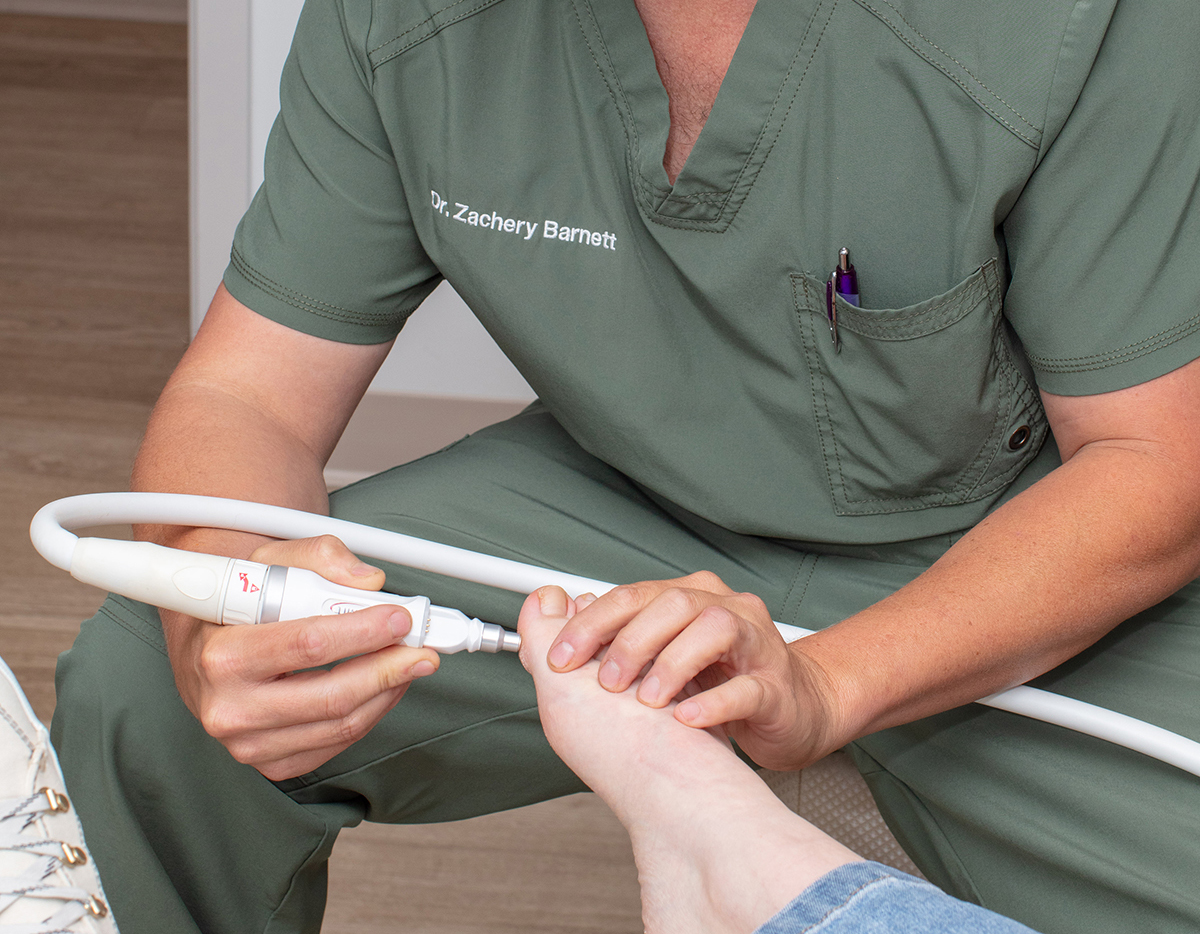Align Foot and Ankle sees all types of foot problems: from skin lumps, bumps, cuts and ulcers, to fractures, tendon tears, and arthritis.
One of the most common issues that Dr. Barnett sees is skin problems, such as calluses and warts. So what is the difference between a callus and a wart, and how do we treat them?

What is a Callus?
A callus is a buildup of a protein in the body called keratin, the same component in your hair and toenails. Calluses, however, are unorganized keratin buildup due to irritation to the skin surface, such as friction or pressure. These calluses can be shallow and nonpainful, or deep and painful. Corns, or clogged sweat glands, can extend deep into the skin and feel like a needle embedded in the foot.
What is a Wart?
A wart is a virus, HPV, and is generally residually in your body if someone has ever gotten a cold sore or wart before. The virus walls itself off in the skin and uses the body’s blood supply to help grow and shield itself from being killed by the immune system. Often the virus gets into the skin in areas of pressure, like the bottom of the foot, and slowly builds up. The body does not recognize it as a virus but does feel the space the virus is taking up, and will build up callus over the wart to try and “protect” the skin. The residual effect is a larger hard area in the skin that can be very painful to walk.
How to Tell the Difference in a Wart and a Callus?
Calluses are keratin through and through, therefore the skin color is consistent. The small skin lines on the bottom of the feet should go through the callus. The calluses can be shaved down without bleeding as keratin is simply dead skin that has no blood supply. A wart, however, steals your blood supply and then your body adds callus. There are no skin lines through the actual wart as it is not part of your body. As you begin to try and take the callus off it will generally hurt early on and start bleeding.
How to Treat Calluses
Calluses are rooted in excess pressure, therefore offloading the area is key. Using structural pads, like ¼ inch felt, cork, or silicon onto the foot or in the shoe will help take the pressure off. Custom orthotics work great as the area can be marked, a foot scan taken, and a device can be designed to build up around the callus and offload the hard skin. The orthotic can correct the biomechanics that led to pressure in the first place. The other way to treat the callus is removing the build up of dead skin. The use of emery boards, sanders, and pumice stones help. In the office, Dr Barnett uses scalpel blades and a Dremel to remove and smooth the callus. Additionally, the use of specific lotions, called keratolytics, will help break down the calluses. Usually 40% urea used daily will help break the keratin down while not irritating the healthy skin.
How to Treat Warts
Warts are foreign invaders and to get rid of them the body will need to fight off the virus. This will involve creating an immune response. There are several products and techniques in the office used to accomplish this. Canthrone, dry needling, and class IV laser are the most effective methods to stimulate an immune response under the category of “destruction”. The most advanced technique to rid warts is Swift MicrowaveTherapy. Using pinpoint energy waves, Swift stimulates the wart, signaling a major immune reaction, without damaging tissue. The reaction helps the body build antibodies to the virus, resolving the wart and any future warts as well. Swift acts more like a vaccine, resolving warts for good.
The bottom of the foot, the most common site for a callus or wart, can be very sensitive to treat; and the painful lumps can be very hard to resolve without the expert care given by Dr. Barnett. Come in today and see what great options you have for those mysterious hard spots on your feet.



